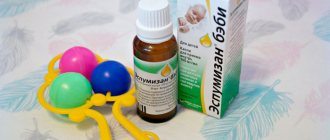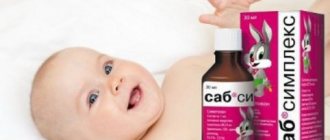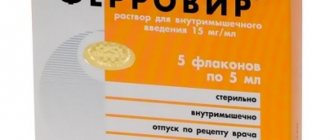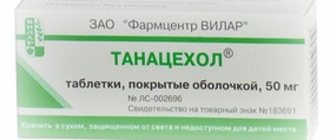All babies experience discomfort in the tummy, associated with an imperfect digestive system, to one degree or another. The usual time of onset of intestinal colic is the 3rd-4th week of life. But in some infants, symptoms of anxiety appear earlier - almost from the first days of life.
For such babies, a safe but effective remedy is needed that will alleviate their condition. Plantex, a product of the Slovenian pharmacological company LEK, helps many children well.
Pharmacodynamics and pharmacokinetics
Pharmacodynamics
A herbal preparation (tea) that reduces gas formation and stimulates digestion. Essential oil and fennel fruits stimulate peristalsis and intestinal secretion of gastric juice. As a result, food is digested and absorbed faster. The active components of the drug prevent the accumulation of gases and improve their discharge, demonstrating an antispasmodic effect.
Pharmacokinetics
There is no data on the pharmacokinetics of this drug.
Description and composition
The drug Plantex has the form of small granules of light brown color. They should be dissolved in water until a solution is obtained that is slightly greenish or brownish in color.
The active ingredient of Plantex is the fruits of fennel (dill). This is a close relative of the familiar dill.
The raw materials for the preparation of the drug are plant umbrellas with seeds, which are collected as they ripen. Unlike regular dill, fennel has a smell more reminiscent of anise. The fruits themselves are greenish-brown, so the granules have the same color, only in a lighter shade.
The active components of Plantex are fennel extract and its essential oil. The following were used as auxiliary ones:
- lactose;
- anhydrous dextrose;
- glucose;
- galactose;
- acacia gum.
These substances not only help give the drug a granular form, but also have a positive effect on the digestion process.
An undeniable advantage of the drug is its completely natural composition, without the use of chemicals.
Analogs
Level 4 ATC code matches: Disflatil
Mint tablets
Kuplaton
Espumisan
Espumisan Baby
Espumisan L
Espumisan 40
Bobotik
Dill water
Pepsan-R
Sub Simplex
Infacol
Bebinos
Dicetel
Meteospasmil
Romazulan
Analogues of Plantex: Fennel (complete analogue), Bobotik, Gastritol “Dr. Klein", Disflatil, Dicetel, Infacol, Carminativum Bebinos, Kolikid, Kuplaton, Meteospazmil, Romazulan, Sab Simplex, Enterospasmil, Espicol Baby, Espumisan, Espumisan Baby.
Indications for use
Plantex is approved for use in children starting from the age of 2 weeks. It is shown:
- to eliminate pain in the intestines caused by spasms in mild digestive disorders;
- when infants transition from breastfeeding to regular nutrition;
- when changing formulas for feeding the baby during the period of his adaptation to the new one.
Plantex can be used both to eliminate symptoms that bother the baby and to prevent their occurrence.
Plantex for newborns
When preparing the solution, it is prohibited to add sweeteners to Plantex. For newborns, use a freshly prepared solution. Pediatricians usually prescribe it to prevent or relieve intestinal colic and bloating.
How to dilute Plantex for newborns is described in the “Instructions for use” section. If necessary, Plantex tea for newborns can be replaced with its complete analogue Plantex Sandoz for newborns.
Reviews of the drug note the herbal composition as an advantage, and the high price as a disadvantage.
How much and how to give
Before using Plantex, its granules should be dissolved. To do this, take a bottle or cup, pour granules from one bag into it and add 100 ml of warm boiled water. Stir until completely dissolved.
The resulting tea is given to the child after meals or between feedings.
For a newborn baby from the age of 2 weeks, 1 sachet per day is enough. Children from three months and throughout the first year of life are given 1-2 sachets per day.
The solution obtained from the granules is divided into several doses. Pediatricians recommend using it 3 times a day, but if the child cannot drink all the liquid in 3 times, then the frequency of use can be increased. The child is given tea to drink in any way convenient for him and the parents: from a bottle, from a teaspoon.
Plantex should be given to infants in small portions throughout the day. Then gases in the intestines will not have time to form, colic will not fully manifest itself, and the baby will be calm.
When colic begins, you can also give the baby a little solution of Plantex granules. The drug usually begins to act quite quickly, within half an hour the baby ceases to feel anxious.
Plantex is given to the baby for a month. After this period has expired, the instructions recommend stopping taking it or changing the drug to another carminative.
If the baby does not accept a drinking bottle, then a good way in this case is to drink it with a teaspoon. A small part of the liquid is collected in it, in the volume in which the baby is able to swallow it.
If a child refuses to take the drug on his own, but is breastfed, pediatricians recommend drinking tea from Plantex to a nursing mother in a dosage of 2-3 bags per day. This way, some of the substance will enter the baby’s body, which will alleviate his condition.
Plantex price, where to buy
In Ukraine, the average price of Plantex in pharmacies No. 1 is close to 62 hryvnia, and the price of Plantex for newborns No. 10 is 68 hryvnia. Buying tea in Russia will cost 256-357 rubles.
- Online pharmacies in RussiaRussia
- Online pharmacies in UkraineUkraine
- Online pharmacies in KazakhstanKazakhstan
LuxPharma* special offer
- Plantex granules for preparing solution 5g N10
RUR 1,370 order
show more
Pharmacy24
- Plantex Sandoz 5 g No. 10 granules Lek pharmaceutical company d.d., Slovenia
97 UAH. order
PaniPharmacy
- Plantex Sandoz Plantex 5g No. 10 Slovenia, Lek
112 UAH order
show more
Dosage form
Plantex for newborns is available in the form of granules, from which parents can easily prepare a solution (tea). Each sachet contains 1 dose of the substance (5 grams), so you can always prepare a fresh drink for your child as needed.
This dosage form has both its advantages and disadvantages. If the baby drinks well from a bottle, then it will not be difficult for him to take the required amount of tea. Parents of those babies who do not accept bottles and pacifiers will experience difficulties in giving their child the required amount of this liquid.
Causes of colic in a newborn
Digestive problems and the appearance of pain in the abdominal area in a newborn baby are explained by a number of reasons:
- reduced intestinal activity, which simply cannot immediately get used to breast milk or formula;
- not fully established processes of absorption and digestion of food;
- insufficient amounts of enzymes that promote digestion.
As a result of this, the newborn baby experiences:
- active gas formation;
- bloating;
- stagnation of food in the intestines.
It is the gas bubbles that collect in the intestines that put pressure on its walls and cause pain to the baby.
Symptoms
How can you tell if your baby is worried about colitis? It often manifests itself as follows:
- the baby becomes restless and cries often;
- his legs are bent at the knees and pressed to his tummy while crying;
- the baby may cry out during feeding for no reason;
- the child often suffers from constipation (read more about constipation in a baby while breastfeeding);
- The baby experiences increased gas formation and flatulence.
As a rule, a problem such as colitis is aggravated by the fact that the child swallows a large amount of air while eating or crying and does not regurgitate it, as well as poor nutrition of the nursing mother (or incorrectly selected infant formula) and improper attachment to the breast.
What does it consist of?
Dried fennel fruit extract is the main component of Plantex. The instructions warn that the granules must be dissolved in warm water before use, and this must be done immediately before use. The result is a slightly brown solution with a greenish tint. It is known that fennel, or scientifically dill, is used to produce the famous dill water, an analogue of Plantex. But, according to reviews, we can conclude that children more readily accept the latter due to its slightly sweet taste, whereas dill water has a not entirely pleasant aroma.
To prepare Plantex, fennel umbrellas are used, which are collected as soon as they are ripe. They have a distinct aroma that is often compared to anise. The fruits, like the finished solution, have a brown tint.
But it should be borne in mind that not only fennel fruits are included in Plantex for newborns. The instructions state that the following auxiliary components are present:
- lactose:
- glucose;
- dextrose anhydrous;
- acacia gum;
- galactose.
These substances have a beneficial effect on the gastrointestinal mucosa. Also, their addition is necessary to form granules. Doctors note that the composition is completely natural, so the drug is recommended for use by newborns.
Other questions about taking Plantex
Very often mothers have a question: how often to give Plantex. And in fact, how often to give it is not a simple question. It is clear that it should be given 3 times a day, but the duration of administration is individual (but your main adviser is a pediatrician).
The second common question that can arise quite often is whether Plantex can be used for constipation. It is definitely possible, the drug can to some extent improve the condition of a minor disorder, but this does not mean that it cannot be used for constipation. Plantex affects gastrointestinal motility, which, in principle, only has a positive effect on the digestive system.
And here you can watch a video from Dr. Komarovsky on how else you can cope with colic:
I hope that my tips were useful to you. Leave comments, share the article with your friends via social networks and subscribe to our updates to be the first to read our new articles. And most importantly - let the children not get sick!
Drug safety
In order for the use of the drug to be safe, it is necessary to take into account some of the dangerous aspects that are mentioned in the instructions for use of Plantex for newborns. Just like with any other medicine, even herbal ones, it should be remembered that babies experience allergic reactions quite often . Often, this can manifest as itching or skin rashes.
In addition, there is one more danger that mothers do not take into account when their children use Plantex. Since the capacity of the infant ventricle is quite small, and the drug should be given throughout the day in the amount of one hundred grams, the child can begin to consume breast milk in a more reduced amount. Moreover, if there is no need to give the newborn the drug in the required amount, then you can develop an individual regimen for him , which, with a smaller amount, will be enough to alleviate the condition.
If a mother does not want to give her baby anything other than her own milk until she is six months old, she can take Plantex herself to relieve colic. This approach can help relieve symptoms and relieve spasms themselves . It should be remembered that the baby will receive much less medicine than if it were given in its pure form.
In addition, we must not forget that for newborns, of course, there is nothing better than mother’s milk, so you should not use the drug solely as a preventative measure . It is, of course, possible to alleviate the baby’s suffering, but it is undesirable to do this more than twice a week, since constipation may occur, which is also not good.
Plantex should also not be given to newborns if lactase deficiency, galactosemia, or glucose or galactose malabsorption syndrome are present.
Symptoms of colic and stomach problems
You can refer to the instructions for use of Plantex for newborns with the following symptoms:
- Before the onset of colic, the baby may begin to grimace, toss and turn, and so on. When the attack itself begins, the child will whine, arch, and press his hands to his tummy;
- possible wide opening or squinting of the eyes;
- if the baby's colic becomes severe enough, he suddenly begins to cry;
- colic is also characterized by refusal to eat, and the rest of the time he eats well;
- relief of colic in a newborn occurs after bowel movements or regurgitation;
- at the moment of spasm, the baby’s face turns red and muscle tension occurs;
- with colic, short-term breath holdings are possible;
- when spasms occur, the baby’s tummy hardens and tenses;
- Often, colic appears after feeding if the mother eats the wrong foods.
We should also not forget that in newborns, spasms in the intestines can be similar to symptoms of appendicitis and other intestinal diseases. That is why a child’s ailments should never be taken lightly.
If appetite disappears, lethargy appears, temperature rises, stomach upset and vomiting, it is better not to blame all this on ordinary colic, since the cause may be much more serious. In this case, you should consult a doctor who can make the correct diagnosis and prescribe the necessary medications.
Instructions for use
Plantex is a phyto-preparation, the composition of which is completely natural.
It is able to have many beneficial effects on the body, which are:
- Elimination of the spastic effect of the smooth muscles of the stomach and intestines.
- Stimulates digestion.
- Elimination of excessive gas formation in the intestines by removing the surface tension of the walls of gas bubbles and collapsing them.
- Normalization of gastric juice production.
- Facilitate the passage of gases.
This effect is achieved due to the mild effect of the active substance - fennel , which is a plant. Once on the gastric mucosa, the drug normalizes acidity and also enhances peristalsis. This allows food to be digested faster, without lingering and without forming rotting processes, which result in the active release of gases.
As it passes through the intestines, fennel gently collapses gases, making them easier to pass and also preventing widespread bloating. The antispasmodic effect is achieved by relaxing the muscles of the stomach and intestines.
Indications for use
Plantex is used as the main drug for:
Digestive dysfunction, in which there is heaviness and pain in the stomach.- Presence of gases, especially in newborns.
- Minor spasms of the gastrointestinal tract, mainly after eating.
The drug can be used as a prophylactic agent to improve gastric motility in children when switching from breastfeeding to heavier foods.
Mode of application
The contents of one sachet (powder) are diluted in cool boiled water (100 ml) and allowed to brew for 15-20 minutes. After the final dissolution of the sediment, herbal tea is taken in between meals. Dosage is determined by age restrictions:
- Newborns and children under one year old take no more than 1 sachet per day. In this case, it is better to feed children with a tablespoon every 3-5 minutes. This will help avoid stomach and intestinal upset and also prevent vomiting. It is better not to give Plantex at night, as increased gas removal can interfere with the child’s proper sleep.
- From one year to five years, the daily dose of the drug is 2-3 sachets. It is better to give drinks between meals, but not on an empty stomach.
- After five years, the daily dose of the drug is 20 g (3 sachets of powder). To avoid the development of adverse reactions, it is not recommended to use more than 4 sachets of powder per day, since excessive release of hydrochloric acid can provoke gastric ulcers.
The herbal preparation has gained popularity among children, especially newborns, when the digestive system is in the process of formation.
For the treatment of serious stomach and intestinal disorders in the adult population, the drug does not provide high effectiveness.
It is strictly forbidden to add Plantex to milk or infant formula , since by combining with milk proteins, the drug can provoke the opposite effect, causing increased gas formation.
It is important for newborns to prepare the drink immediately before drinking it. In a stagnant drink, cloudiness and the formation of a mucus-like sediment may occur.
You cannot use the daily dose at one time. This places an additional burden on the body and can also provoke the development of unwanted side reactions from the intestines.
Composition and release form
Plantex is produced in the form of granular powder, which is subsequently dissolved in a small amount of water. One sachet contains 5 g of active substance.
The bags are packed in cardboard packs, 10 pieces each. The contents of the package are brown granules with a specific fennel smell. The presence of inclusions of a darker color is allowed.
One package contains:
- fennel fruit extract – 250 mg;
- fennel essential oil – 2.4 mg;
- auxiliary components: lactose, acacia gum, galactose.
The presence of natural flavors and sweeteners makes the resulting drink easy to drink without causing disgust.
Drug interactions
Since Plantex has a completely homeopathic composition, there is no data on its interaction with other medications.
Contraindications
It is contraindicated to use Plantex in children with:
- lactase deficiency (since the drug contains lactose);
- impaired absorption of galactose or glucose;
- galactosemia (disturbance in the chain of transformations of galactose into glucose in the body);
- individual intolerance to any component of the composition.
Before using Plantex in children, you should consult your pediatrician.
Plantex is not contraindicated for pregnant women, but the instructions do not recommend its use, since no research has been conducted in this area.
Reviews
- “Before we discovered Plantex, we tried Espumisan. They say it is a good remedy, but it absolutely did not help us. But Plantex suited us perfectly! And also Subsimplex. If necessary, I also install a gas outlet tube from time to time.”
- “I do not approve of this drug, since 100 ml of water, which must be diluted with it according to the instructions, is a lot for a baby, who, ideally, does not need anything other than breast milk for up to six months!”
- “We discovered Plantex when we were about a month old. One sachet was divided into two parts and diluted with 50 ml of water. My daughter really liked its taste and drank it in one gulp. He really helped us. Now the baby is 6 months old and if I see that her tummy is bothering her, I immediately apply Plantex, and everything gets better.” Elizabeth:
- “When the child began to have colic, I opted for Plantex, since reviews about it on the Internet were mostly positive, and the composition was natural (I didn’t want to feed my baby synthetics). I gave it for several days in a row, I didn’t see any effect, but I reassured myself that, perhaps, like most natural drugs, Plantex has a cumulative effect. But, alas, there was no effect either after a few days or after a week. A useless drug, in my opinion."
- “When my daughter started having colic, she screamed terribly. My wife couldn’t stand it and sent me to the pharmacy to get the anti-colic remedy that they recommended there. The pharmacist gave me Plantex. They made it as indicated in the instructions, and my daughter really liked it. After about an hour, a positive effect appeared. We are still saving ourselves with this remedy.”
Which is better: Plantex or Espumisan
I hope you have not forgotten that you should not self-medicate, but rather take what your treating pediatrician prescribed. But I promised to share my experience and my friends’ reviews about Plantex.
So, you need to understand that Plantex and Espumisan are completely different things, if Plantex is a herbal medicine (easier to say, weed), then Espumisan is a medicinal product (in simple terms, “chemistry”). Usually, the problem with colic begins to be solved with herbs - Plantex tea. And if it is not effective, then they try Espumisan.
Storage conditions
The sachets of the medicine can be stored at room temperature, preferably away from heating devices or exposure to sunlight.
If the granules are not completely used, the opened bag should be stored in a dry place, tightly closed.
Colic is not some kind of pathology of the body. They are a natural process of adaptation of the newly born baby’s body to eating food. There comes a time when his digestive system matures, and unpleasant phenomena cease to bother him.
But still, every parent strives to alleviate the condition of their baby during the period of increased gas formation in the intestines and the spasms that arise against this background. Plantex can significantly help with this.
Advantages and contraindications of using Plantex
This drug is allowed to be given from the first birthday of a child.
Drinking tea in combination with a belly massage will relieve pain in the baby. Designed specifically for newborn babies, Plantex tea actively stimulates digestion, suppresses the process of gas formation, relieves intestinal spasms, helps the little person calm down and fall asleep faster.
Benefits of using Plantex tea:
- the main components of plant origin are absolutely harmless to the baby’s health;
- sold in pharmacies without a prescription;
- minimum list of contraindications for use;
- acceptable price;
- quickly eliminates colic and other manifestations of digestive disorders;
- approved for use from birth;
- has a pleasant anise flavor;
- convenient to store.
Among the negative aspects, they note the lack of a positive effect in very severe colic (the baby cannot always take the required dose to obtain the desired result).
Plantex tea is contraindicated in the following pathologies:
- diseases associated with metabolic disorders;
- lactose intolerance;
- allergic reaction to any of the components of the tea.
Side effects
Of the side effects of Plantex, only increased sensitivity of the body of some babies to it was observed. It was expressed in the form of allergic reactions. Parents will easily notice the red rashes that appear on the cheeks, neck, tummy or butt.
Minor digestive disorders may also occur - constipation or, conversely, diarrhea.
In this case, you need to stop taking Plantex and consult with your pediatrician whether the drug actually caused such a reaction. Dyspepsia may be a sign of lactase deficiency, so consultation with a specialist is necessary.









